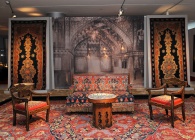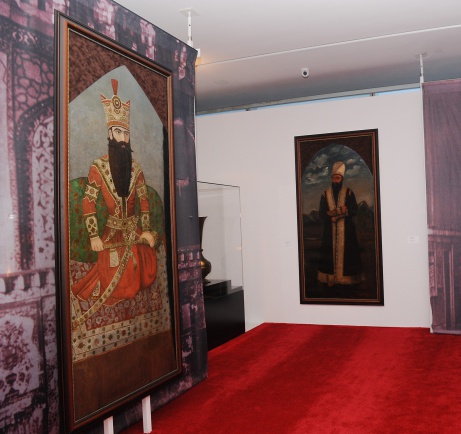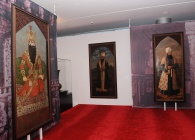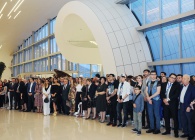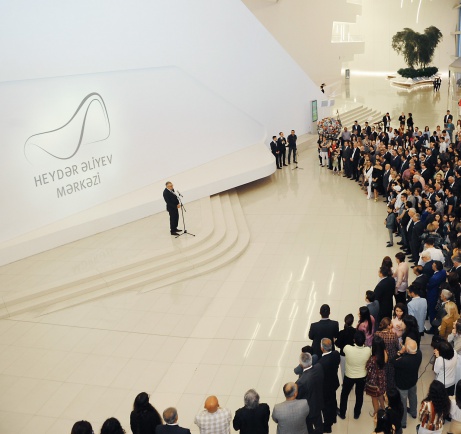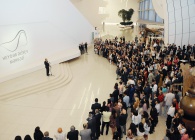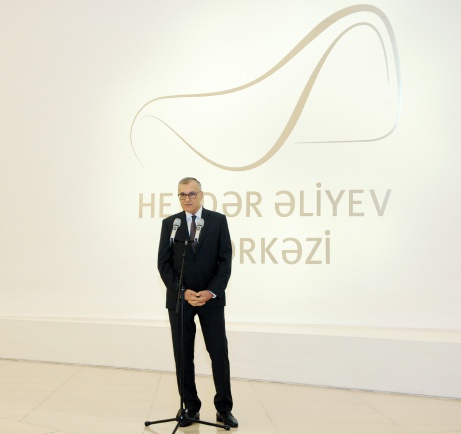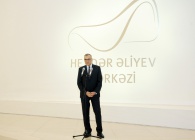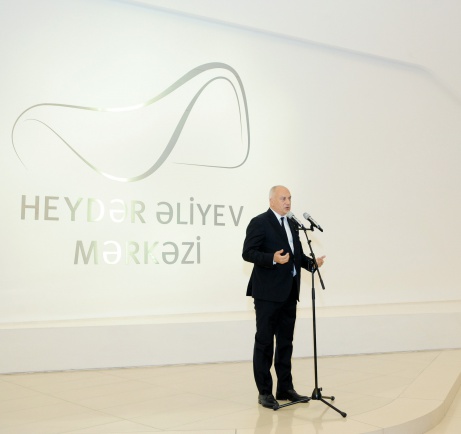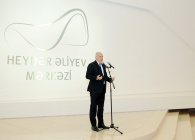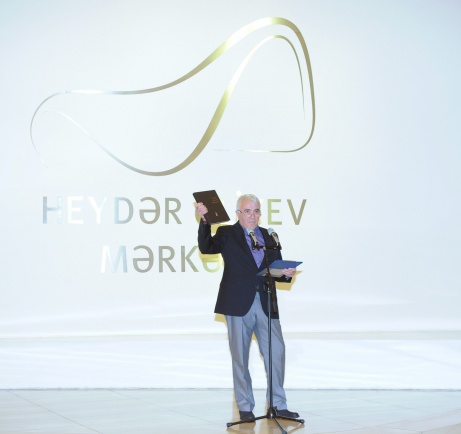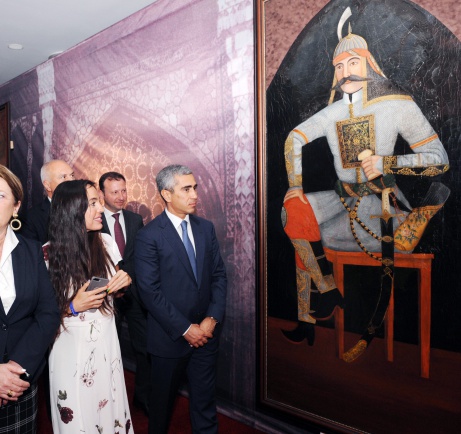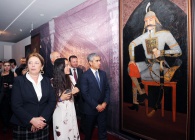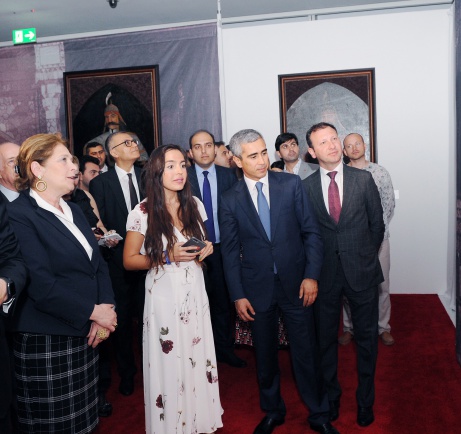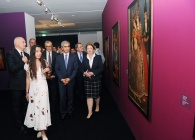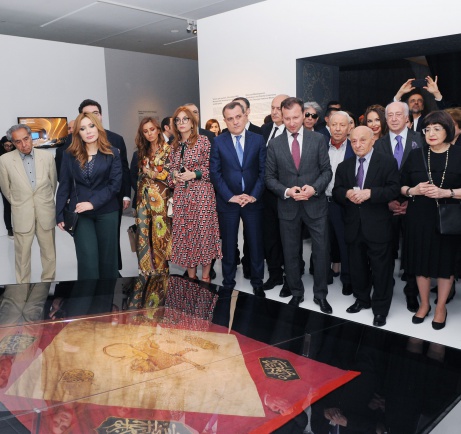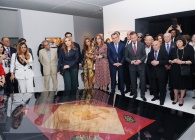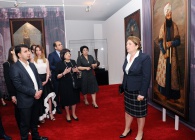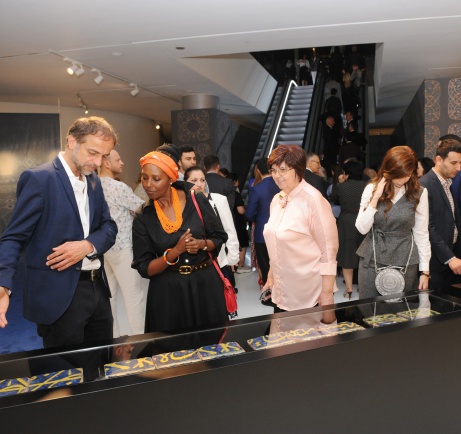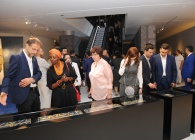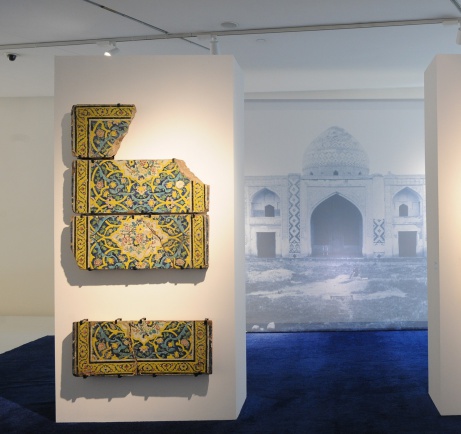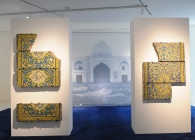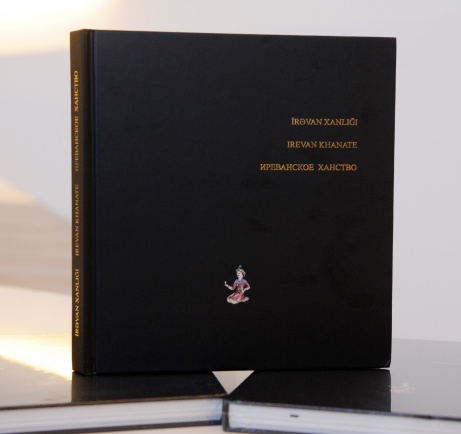
President of the Russian Federation Vladimir Putin presents the “Pushkin” Medal to Leyla Aliyeva

On May 27, opening of an exhibition called “Masterpieces of History”, comprised of Azerbaijani and Oriental collections being preserved at the National Museum of Georgia, took place at the Heydar Aliyev Centre.
Vice-president of the Heydar Aliyev Foundation Leyla Aliyeva attended the opening ceremony.
Speaking at the event, head of the Public and Political Affairs Department of the Presidential Administration of Azerbaijan Fuad Akhundov talked about the exhibition’s significance, noting that five years earlier, existence of thousands of historical and cultural artefacts related to Azerbaijan, being preserved at the National Museum of Georgia, became known. President Ilham Aliyev and First Vice-president Mehriban Aliyeva were informed of the fact, and a decision was taken to arrange a grandiose exhibition based on these materials.
Thanking the Heydar Aliyev Foundation for the organization of the exhibition, Fuad Akhundov brought to attention that the Culture Ministry of Azerbaijan and the National Museum of Georgia have done a lot of joint work. A big portion of the photos being displayed at the exhibition have been restored. Since the very start of their establishment, the National Museum of Georgia have collected these artefacts and preserved them to date. I want to thank our Georgian colleagues for this work” – said Mr. Akhundov.
General Director of the National Museum of Georgia, academician David Lordkipanidze said that old art examples being displayed at the exhibition may be named as masterpieces of Azerbaijani artisans. He expressed confidence the exhibition would be loved by visitors.
It was brought to attention that the exhibition, which will continue until October 6th, displays some 300 exhibits. Old Azerbaijani art examples created at the time of Gajars and collected later, a collection of household items and paintings related to Sardar palace complex of the Iravan Khanate, and photo-documents received from the archive of Russian photographer Dmitri Yermakov are demonstrated in three sections.
Majority of the old art examples related to the Gajars epoch are presented through world renowned oil-paint pictures, miniatures, ceramic and metal products, and textile and carpets related to the time of Fatali Shah. Well aware of picture’s power, Fatali Shah broadly utilized architecture, painting and decorative art to demonstrate his influence and achievements. A portrait of Fatali Shah too is among the exhibits.
Six works related to the 19th century, made using oil paint by Mirza Gadim Iravani, the founder of Azerbaijani panel painting, master of ornament and portrait, who has had a great influence on the Azerbaijani fine arts, are also displayed at the exhibition. In rare painting works from the Iravan Khanate, which had been destroyed by Armenia, are pictured Shah Gajar, Iravan rulers, and Oriental epos characters.
Mirza Gadim Iravani is known by stencil paintings, wall decorations, products of jewellery, works made using lacquer, and glass painting art. He was the one who repainted rescued original works of the Sardar Palace of the Iravan Khanate in the middle of the 19th century, and plates used in decoration of the mosque and palace of the same palace complex.
Among the archaeological remnants of the Sardar palace are presented traditional costumes and items belonging to the people of Azerbaijan which lived on the territory of Iravan Khanate and contemporary Armenia, as well as ethnographic collection comprised of furniture samples, vases, and other everyday life attributes. Familiarization with these exhibits allows to more clearly imagine the life and household picture of that era, demonstrating the architectural style of the palace.
A collection comprised of photos by D.Yermakov, who had been working as a military topographer and, later, during 1877-1878, participated in the Russia-Ottoman war, is also presented at the exhibition. After the war, Yermakov was engaged in photo art in Tbilisi, made trips to Caucasian region, and participated in a series of archaeological expeditions. He has created a series of photos showing in details the process of destruction of rare buildings of the Iravan fortress – the Sardar Palace, mosques, caravanserai and other buildings related to the middle ages that had formed the historical centre of Iravan city.
In the framework of the event, presentation of the book “Iravan Khanate: historical and cultural profile” by historian-professor Eldar Nadirzadeh, the chief curator of the National Museum of Georgia, also took place.
Eldar Nadirzadeh, the author of the book, shared his thoughts of the book. He noted that in the book, printed in Azerbaijani, English and Russian, the history of the Iravan Khanate, its rulers, battles for the Iravan fortress, and the role the Khanate has played in the history of Azerbaijan are described in details. Photo and painting works about the history of the Iravan Khanate, pictures of rare exhibits being preserved in the National Museum of Georgia have been included in the book.
Then, visitors became familiarized with the exhibition.


